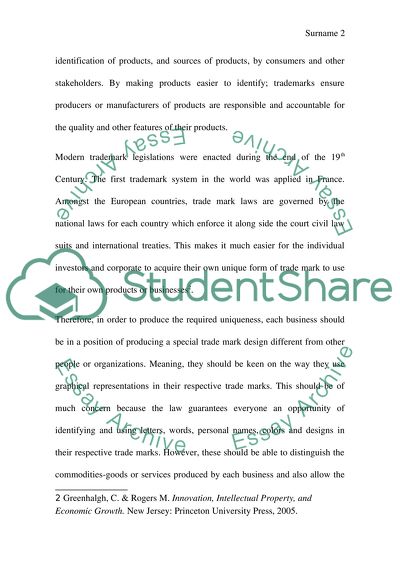Cite this document
(“Critically compare the way in which courts have elaborated on the Essay”, n.d.)
Critically compare the way in which courts have elaborated on the Essay. Retrieved from https://studentshare.org/law/1641752-critically-compare-the-way-in-which-courts-have-elaborated-on-the-scope-rationale-and-function-of-a-the-graphic-representation-requirement-in-trade-mark-law-and-b-the-claims-for-patent-protection-reference-can-be-made-to-both-uk-and-eu-cases
Critically compare the way in which courts have elaborated on the Essay. Retrieved from https://studentshare.org/law/1641752-critically-compare-the-way-in-which-courts-have-elaborated-on-the-scope-rationale-and-function-of-a-the-graphic-representation-requirement-in-trade-mark-law-and-b-the-claims-for-patent-protection-reference-can-be-made-to-both-uk-and-eu-cases
(Critically Compare the Way in Which Courts Have Elaborated on the Essay)
Critically Compare the Way in Which Courts Have Elaborated on the Essay. https://studentshare.org/law/1641752-critically-compare-the-way-in-which-courts-have-elaborated-on-the-scope-rationale-and-function-of-a-the-graphic-representation-requirement-in-trade-mark-law-and-b-the-claims-for-patent-protection-reference-can-be-made-to-both-uk-and-eu-cases.
Critically Compare the Way in Which Courts Have Elaborated on the Essay. https://studentshare.org/law/1641752-critically-compare-the-way-in-which-courts-have-elaborated-on-the-scope-rationale-and-function-of-a-the-graphic-representation-requirement-in-trade-mark-law-and-b-the-claims-for-patent-protection-reference-can-be-made-to-both-uk-and-eu-cases.
“Critically Compare the Way in Which Courts Have Elaborated on the Essay”, n.d. https://studentshare.org/law/1641752-critically-compare-the-way-in-which-courts-have-elaborated-on-the-scope-rationale-and-function-of-a-the-graphic-representation-requirement-in-trade-mark-law-and-b-the-claims-for-patent-protection-reference-can-be-made-to-both-uk-and-eu-cases.


